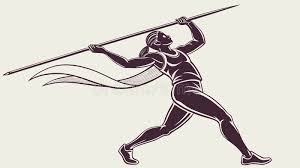
javelin of lightning
Throughout history and mythology, lightning has symbolized divine power, raw energy, and unstoppable force. Weapons associated with thunder and storms often capture human imagination, and among these, the Javelin of Lightning stands out as one of the most iconic. Blending mythological inspiration with modern fantasy storytelling, this weapon has become a staple in role-playing games, novels, and legends. It is a tool of both destruction and awe, wielded by gods, warriors, and adventurers who embody the fury of the storm.
Mythological Inspirations
The origins of the Javelin of Lightning can be traced back to the mythologies of ancient civilizations. In Greek mythology, Zeus wielded thunderbolts as his weapon of choice, casting them against enemies to display his supremacy. In Norse legend, Thor’s hammer Mjölnir carried similar associations with thunder and lightning, striking fear into giants and foes. While these weapons were not javelins in the literal sense, they created the archetype of divine weapons powered by storms. Over time, storytellers and game designers adapted these motifs, transforming them into a more tangible and versatile weapon—the Javelin of Lightning.
The Javelin as a Symbolic Weapon
Unlike swords or axes, the javelin has always represented speed, range, and precision. It was used in ancient warfare for throwing at enemies from a distance, combining agility with lethality. When infused with the elemental force of lightning, the javelin transcends its physical form to become a symbol of unstoppable energy and divine justice. This duality—an ordinary weapon enhanced by extraordinary power—makes it uniquely compelling in both myth and fantasy literature.
The Javelin of Lightning in Fantasy Fiction
Modern fantasy often borrows heavily from myth, and the Javelin of Lightning has appeared in various books, comics, and games. Its defining trait is the ability to transform into a bolt of lightning when hurled, striking enemies with both physical force and electrical energy. In many stories, the weapon returns to the wielder’s hand after being used, reinforcing its magical nature. Such features tie back to legendary weapons like Mjölnir, while adapting the idea for new audiences who crave both mythic resonance and inventive mechanics.
Role in Dungeons & Dragons
The Javelin of Lightning holds a special place in Dungeons & Dragons (D&D), where it is considered a magical item available to adventurers. In gameplay, the javelin can be thrown normally, but once per day, it can unleash its true power. When activated, it transforms into a streak of lightning that travels in a straight line, dealing heavy damage to all creatures caught in its path. This makes it one of the most exciting weapons for characters who rely on ranged or melee combat.
Players often prize the Javelin of Lightning for its versatility. It functions as a standard ranged weapon when needed, but its once-per-day magical ability can turn the tide of a battle. For parties facing groups of enemies or powerful monsters, this item adds a dramatic flair while also offering practical strategic value.
Mechanics and Gameplay Impact
In most D&D editions, the Javelin of Lightning works as follows:
- When hurled, the wielder speaks its command word, activating its magic.
- The weapon becomes a bolt of lightning, dealing massive damage to the target and any creature in its line of flight.
- Once the lightning strike resolves, the javelin returns to being an ordinary weapon, reusable in future encounters.
- The lightning ability can only be used once per day, preventing overuse and keeping the item balanced.
This combination of dramatic effect and balanced mechanics makes it a favorite among dungeon masters and players alike. It provides cinematic moments without overshadowing other magical gear.
Symbolism in Role-Playing Games
Beyond its mechanical use, the Javelin of Lightning often carries symbolic weight in storytelling. It may be bestowed by a storm god, discovered in the ruins of an ancient civilization, or granted as a reward for a heroic quest. For characters, wielding it may signify a connection to divine forces, tempestuous power, or destiny itself. Dungeon masters frequently use it as a narrative device, weaving it into campaigns as more than just a tool—it becomes part of the story’s mythos.
Strategies for Players
Adventurers who obtain the Javelin of Lightning should consider both timing and positioning when using it. Since the lightning ability is limited to once per day, saving it for crucial battles ensures maximum impact. Players often line up enemies to maximize its area damage, making it devastating against clustered foes. Pairing it with abilities that immobilize or group enemies can further enhance its effectiveness. Meanwhile, keeping it as a reliable ranged weapon between magical uses adds to its utility.
Comparisons with Other Magical Weapons
Within D&D and other fantasy settings, the Javelin of Lightning often stands alongside iconic items like the Flame Tongue sword or the Staff of Power. Compared to these, the javelin is simpler yet equally exciting. It may not have the continuous effects of a flaming weapon or the versatility of a powerful staff, but its dramatic lightning strike is memorable. This makes it especially appealing to players who enjoy flashy, cinematic abilities that leave a lasting impression.
Real-World Influence and Cultural Appeal
The concept of a lightning-infused weapon resonates beyond fantasy gaming. Pop culture often portrays lightning as a metaphor for speed, energy, and divine punishment. From superhero stories where characters channel electricity to video games that feature lightning spells, the theme remains timeless. The Javelin of Lightning fits seamlessly into this cultural fascination, bridging the gap between ancient myth and modern imagination.
Crafting and Variations
In many fantasy worlds, magical weapons like the Javelin of Lightning are not simply found but crafted by legendary artisans or enchanted by powerful sorcerers. Some variations may enhance its abilities, allowing multiple lightning strikes per day, or enabling it to summon storms when wielded. Dungeon masters often customize the weapon to suit their campaigns, making each version unique. These variations add depth, ensuring that no two javelins feel exactly the same across different adventures.
Why It Endures
The enduring appeal of the Javelin of Lightning lies in its fusion of simplicity and grandeur. At its core, it is a humble spear—a weapon anyone might use. Yet through magic and myth, it transforms into a divine instrument of destruction, echoing humanity’s fascination with storms and the heavens. Whether in ancient myths or modern games, it continues to inspire awe and excitement.
Conclusion
The Javelin of Lightning is more than just a weapon—it is a bridge between mythological power and imaginative storytelling. Rooted in legends of thunder gods and adapted into modern fantasy, it symbolizes the awe-inspiring force of nature harnessed in a single throw. In Dungeons & Dragons, it creates memorable gameplay moments, while in broader culture, it embodies the timeless fascination with lightning and divine energy. As long as humans continue to look to the skies with wonder, the Javelin of Lightning will remain a symbol of strength, speed, and unstoppable force.
For an official breakdown of its D&D rules, you can explore the D&D Beyond magic items guide. To learn more about lightning-based myths and their role in ancient culture, visit the World History Encyclopedia’s mythology section.






